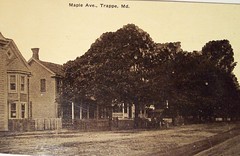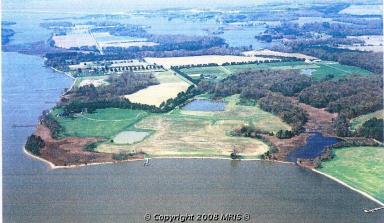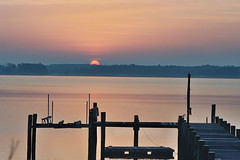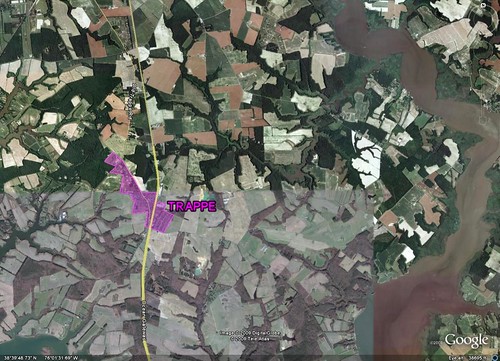Federal stimulus threatened to overrun small town with sprawl

Posted May 12, 2009 at 1:46PM
Just last week, my NRDC colleague Nancy Stoner pointed out that the federal program that provides water infrastructure to local communities is essentially subsidizing sprawl. This is because the Clean Water State Revolving Fund (an atrocious name if I've ever heard one) "continues to fund new sewage treatment plants and new sewage and stormwater collection systems in greenfields, i.e., currently undeveloped or working landscapes." Apparently the problem would remain even under a generally progressive new bill in Congress.
 Brava Nancy for pointing that out. New development should pay its own way, or at least make a justification as to why the subsidy is in the public interest when all factors, including the consequences of sprawl, are considered.
Brava Nancy for pointing that out. New development should pay its own way, or at least make a justification as to why the subsidy is in the public interest when all factors, including the consequences of sprawl, are considered.
The problem is vividly illustrated by a controversial new development recently proposed for a 924-acre site near the small village of Trappe, Maryland, in a rural area east of the Chesapeake Bay. Trappe, whose current population is 1,146, sits about 80 miles southeast of Washington, DC, on US Route 50, the main highway through Maryland's Eastern Shore, in between the larger towns of Easton (pop. 11,708) and Cambridge (10,911). Trappe's population was about to increase more than fivefold with a new development that would have been made possible by some $18 million of federal taxpayer money for wastewater infrastructure, in this case from the federal stimulus package.
You can get a sense of how rural the area is on this Google Earth image:
In the early part of this decade, a developer acquired land to the east of Trappe, proposing "to build 2,300 new houses in a cornfield," according to Barbara Padden of Friends of Trappe, quoted in a story by Lisa Rein in The Washington Post. A report prepared for the town of Trappe in 2006 noted that the project would require "expanded public facilities," including the following:
"(1) construction of water treatment, storage and distribution facilities; (2) construction of a wastewater treatment collection system, including administrative offices and laboratory space; (3) construction of fire hydrants and valves; (4) construction of roads, curbs and gutters; (5) acquisition of land for a Town administrative building; (6) construction of a town administrative building and public works building; (7) public works equipment; (8) improvements to the firehouse; (9) contributions toward a town police force [currently non-existent] and public safety equipment; (10) funding toward the Town's administrative staff necessary to assist with the town's review and approval of development plans and building permits for the Lakeside Development; (11) open spaces, parks and the lake as described in the planned unit development plans approved by the Town; (12) related grading, engineering, lighting, sidewalks, stormwater management areas, and other improvements necessary for the development of the Lakeside District."
By far the most expensive of these would be the water ($2.1m) and wastewater ($19.6m) treatment facilities. The report drily noted that "the Town currently employs two administrative clerks, two wastewater treatment employees, and one town planner.  The Town employs no police officers. The Town also has no public works department or public works equipment, aside from the public works staff and equipment related to the Town's existing water and wastewater treatment facilities."
The Town employs no police officers. The Town also has no public works department or public works equipment, aside from the public works staff and equipment related to the Town's existing water and wastewater treatment facilities."
(I'm actually surprised that there was no mention in the report also of the impact of the development on school facilities and expenses, which can be substantial and turn otherwise revenue-positive development into a revenue-negative proposition, particularly if the project is all-residential.)
So the water infrastructure is where the federal stimulus came in. According to Rein's story in the Post, the town government rushed to request $18 million in federal stimulus funds to build a wastewater treatment plant for the development. The project "narrowly missed the cut this year but rose to No. 1 on [Maryland's] waiting list for stimulus funding. If another project dropped out, Trappe East would rise to the approved list."
 Although the development has been touted by its proponents as an economic boost to the town, the Talbot County Preservation Alliance says that the fiscal costs of the project would have exceeded its benefits by millions, and that it would have caused average taxes paid by current residents to triple. The project was opposed by the county government and by state comptroller Peter Franchot from the start, according to the story in the Post, and eventually the town leaders withdrew the proposal. The county actually had a competing proposal to use stimulus funds to facilitate hospital expansion in another town.
Although the development has been touted by its proponents as an economic boost to the town, the Talbot County Preservation Alliance says that the fiscal costs of the project would have exceeded its benefits by millions, and that it would have caused average taxes paid by current residents to triple. The project was opposed by the county government and by state comptroller Peter Franchot from the start, according to the story in the Post, and eventually the town leaders withdrew the proposal. The county actually had a competing proposal to use stimulus funds to facilitate hospital expansion in another town.
Environmentally, the problem was not just one of scale but also one of emissions, since the development would have been totally automobile-dependent. Especially with no unfilled jobs in Trappe and few in Easton and Cambridge, each several miles away, a sizeable portion of the development's 5,800 new residents would have had long commutes and large carbon footprints. While no one should begrudge Trappe's town leaders' interest in pursuing economic development, they apparently didn't think this one through.
Where the heck was Maryland's vaunted smart growth program in all this, you may wonder? The whole point, after all, is to prevent subsidy from flowing to sprawl. Sadly, the short answer seems to be, "missing in action."  The program has always been subject to the whims of local government, which draws boundaries for the "funding areas" that are allowed to receive state money for development. Sure enough, this proposal was in such an area, never mind that it would have increased the size of the town five times over.
The program has always been subject to the whims of local government, which draws boundaries for the "funding areas" that are allowed to receive state money for development. Sure enough, this proposal was in such an area, never mind that it would have increased the size of the town five times over.
And, in addition, state environmental officials claim there just wasn't enough time to vet all the proposals for stimulus funding. Apparently scrambling for a better answer, Bridget Kinney of the state's Department of the Environment told the Post that the project would probably have failed additional land-use reviews because it was inconsistent with the state's land-use goals.
Given the Department's dismal performance on the project so far, I'm glad that, for now at least, Maryland's citizens don't have to trust that process.
